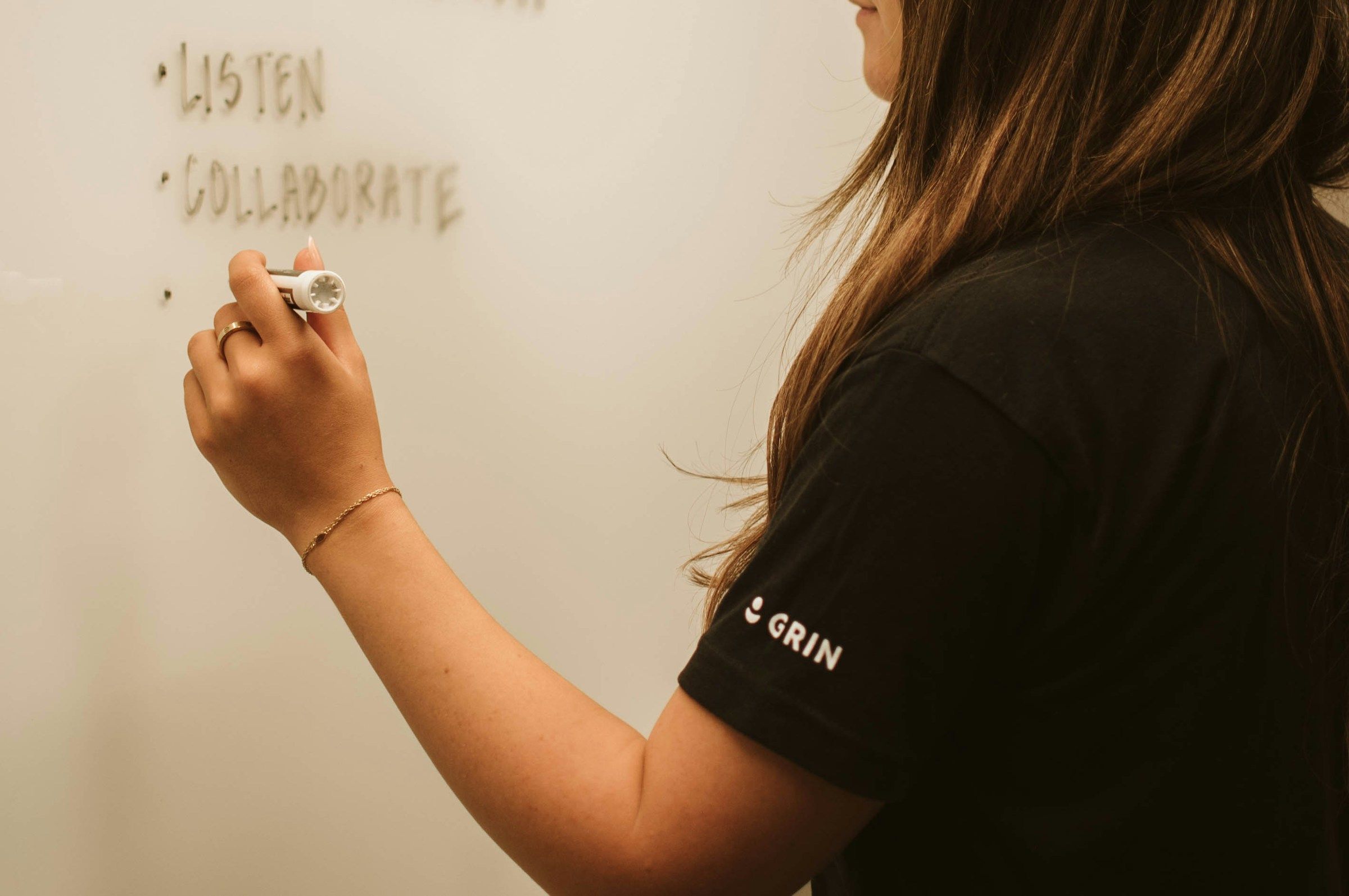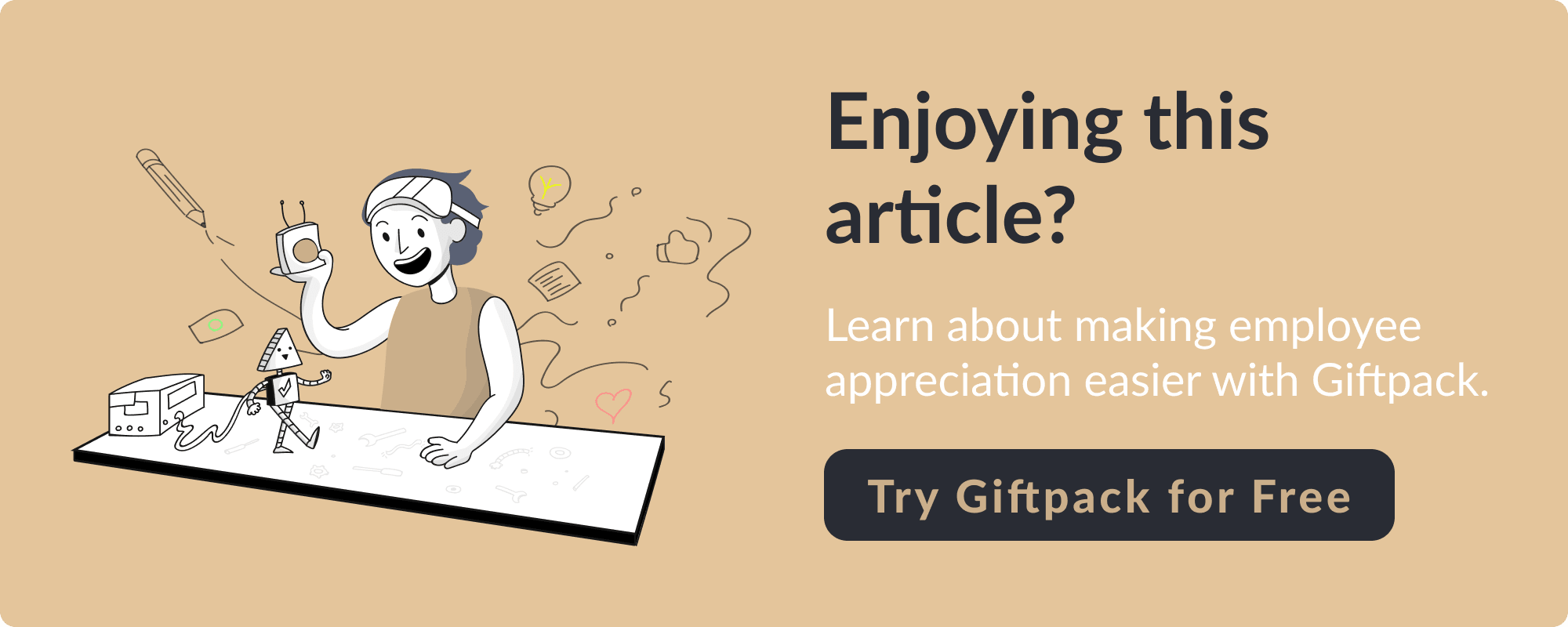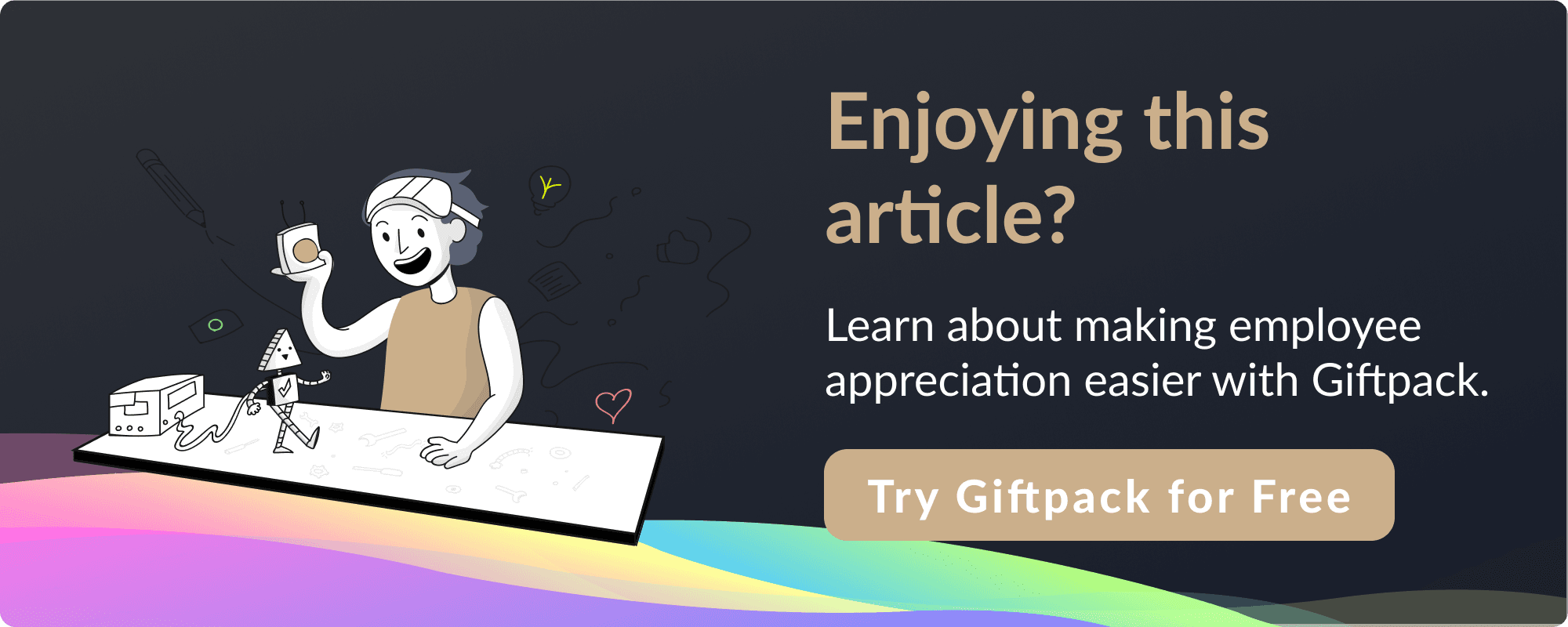
Picture this: it’s your first day at a new job, and you’re met with a whirlwind of names, documents, and procedures. It can be overwhelming, right? Inclusive Onboarding is all about turning that chaos into clarity, ensuring every new hire feels welcomed and ready to contribute from day one. This article breaks down the HR onboarding checklist you need for an efficient process, packed with insights to streamline your efforts. Whether you’re an HR pro or just diving into this world, you’ll find the tools you need to create a seamless experience for everyone.
And while you’re at it, consider how personalized company branded swag can make newcomers feel special and connected. It’s a simple way to say, “Welcome to the team!”
What Is An HR Onboarding Checklist & Why Is It Important?

An HR onboarding checklist lays out the steps to transition new hires smoothly into their roles within a company. It guides HR teams to oversee tasks like completing paperwork, setting up equipment, and granting access to tools and resources. This checklist ensures no crucial steps are skipped, promoting a consistent experience for every new hire.
Compliance and Standardization: A Must for Every Business
For businesses, an onboarding checklist ensures all legal and regulatory requirements are met, including completing employment documentation and safety training. It promotes fairness by providing a standardized process for each new hire, preventing disparities if some managers are more attentive than others.
Efficiency for HR Professionals: Streamlining the Process
An onboarding checklist streamlines administrative tasks, which is particularly valuable for fast-growing companies bringing in new hires frequently. Knowing that new hires have a structured onboarding plan allows HR teams to focus on other business priorities, enhancing productivity.
Positive Experience for New Hires: Feeling Welcome and Supported
For new employees, a checklist offers a clear roadmap, helping them feel informed and supported from day one. It fosters a sense of belonging, increasing their comfort and confidence as they start their roles. By helping new hires feel integrated and productive more quickly, the checklist also contributes to employee satisfaction and retention.
Higher Productivity and Engagement: Getting Up to Speed
With a clear, well-defined process in place, new hires can quickly reach productivity and contribute effectively to the company's goals. A good onboarding experience increases engagement, commitment, and alignment with company values, which can be critical in determining how long they stay with the company.

What To Include In Your Onboarding Checklist?

Office Tour: Your First Steps Matter
Getting to know the office isn't just about logistics—it's about feeling at home. So, walk them through their workspace, point out the nearest restrooms, and make sure they know where the break room is. It’s not just a tour; it’s their first impression of their new environment. You want them to feel right at home, not like a stranger in a strange land.
New Hire Paperwork: Let’s Get the Formalities Out of the Way
Paperwork is the not-so-glamorous part of onboarding but it's vital. Get those W-4s, I-9s, and benefits forms sorted out. You don’t want them thinking about paperwork when they should be thinking about their new role. This step ensures they're set up for payroll and benefits. It’s like setting the foundation before building a house.
Employee Handbook: Your Roadmap to Company Culture
The employee handbook is their guide to everything the company stands for. It covers policies, procedures, and expectations. It's not just a rulebook; it’s a survival guide. This is where they’ll learn about leave policies and the code of conduct. Hand it to them early so they can start getting acquainted.
Training Schedule: Building Skills from Day One
A clear training schedule shows them the path forward. This isn’t just about cramming in information; it’s about giving them the skills they need to thrive. Make sure it’s detailed—where they need to be and when. This is their roadmap to mastering their new role, so make it count.

Related Reading
• Small Business Onboarding • Onboarding Remote Employees • Onboarding Phases • New Team Member Announcement • Onboarding Meeting • New Hire Onboarding Survey Questions • New Hire Orientation Survey • Onboarding and Training • Onboarding Goals
HR Onboarding Checklist For An Efficient Onboarding Process

Think of your first day at a new job like visiting a different city. You need a map to make sense of it all. New employees need a thorough tour of their work environment to feel at home. Show them around key spots like:
- Meeting rooms
- Restrooms
- Break areas
- Emergency exits
- Supply locations
This walkthrough helps lower anxiety and sets the tone for a smoother first day.
Paperwork: Knock It Out Early
Getting the required paperwork filed on time is crucial. This includes tax forms like the
- W-4
- ID verification forms like the I-9
- Direct deposit details
- Benefits enrollment paperwork
Set aside time specifically for this task to let new hires ask questions and grasp the importance of each form. This way, they're all set for payroll and benefits without a hitch.
Employee Handbook: Your Go-To Guide
Hand over an employee handbook to give new hires a resource for essential policies and procedures.
- Company values
- Attendance rules
- Leave policies
- Dress code
- Communication protocols
- Code of conduct
This guide helps them understand company standards and serves as a helpful reference along the way.
Tech Setup: Get It Done Before Day One
Make sure new hires have the tools they need by setting up their computer, email, and any necessary software accounts ahead of time. This includes instructions on:
- Accessing company networks
- Contacting IT
- Using key platforms
Getting this sorted in advance lets employees start off smoothly and minimizes downtime.
Training: A Tailored Schedule
A detailed training schedule is key to helping new hires build skills and confidence in their roles. This includes:
- Job-specific training sessions
- Introductions to team workflows
- Scheduling one-on-one time with mentors or managers
Laying out a clear training path gives them insight into how they can grow within the role and contribute effectively.
Learning Resources: Encourage Ongoing Growth
Encourage ongoing learning by introducing new hires to the company’s learning resources, like:
- Training portals
- Certification programs
- Online courses
Providing access to these resources from the start shows your commitment to their professional growth and equips them to enhance their skills.
Goal Setting: Finding Direction
Meeting with their manager to discuss initial performance goals is crucial for giving new hires direction. This includes:
- Outlining project timelines
- Productivity goals
- Key deliverables
Setting clear expectations provides a sense of purpose and shows how their role aligns with broader company objectives.
Onboarding Timeline: A Clear Path Forward
Now it’s time to put it all together and create an onboarding timeline. An onboarding timeline lays out when each step of the new employee onboarding process should happen, so your new hire has a clear workflow to follow from day one onward. Your timeline should address the following questions:
When will the onboarding process start?
You may want to start the logistical aspects of onboarding before an employee’s first day—like getting their direct deposit and tax information, setting up their equipment, and sending a personal welcome message from your team.
How long will the onboarding process last?
Since you’ve already laid out all of the information and skills your new hire needs to know, you should have a general sense of how long it will take for them to get up to speed. Remember to build in plenty of buffer time so they can take breaks and process all the new information. It’s also important to communicate the length of your onboarding process to new hires, so they know how much time they should spend on each task. Keep in mind that this isn’t set in stone—you can always adjust the pace of onboarding depending on how fast your new hire is learning.
When should you schedule training sessions to pass along key information?
For example, you might want to schedule high-level employee orientation sessions on company processes the first week, and skills training during the second and third weeks.
When does your new hire need to learn and start using specific skills?
Try to time skills training sessions close to when the new employee will actually put those skills into practice. That way, they have an opportunity to solidify their understanding and ask questions that weren’t addressed during training.
Who should your new hire meet with, and when?
For example, they might check in with their mentor every day during their first week, and meet cross-functional stakeholders during their second or third week.
What goals should your new hire achieve by the first day, week, month, and so on?
These should be clear expectations for what the new employee should accomplish by when. For example, a new recruiter on your team may have a goal to shadow a hiring process with one of their peers during their first month. Keep in mind that goals are a starting point—you can still work with your new hire to adjust objectives as needed.
When will you meet with the new employee to give and receive feedback?
This can include informal check-ins to see how things are going and what can be improved, plus more structured feedback sessions at the end of the new hire’s first month or 100 days.
Onboarding Phases: A Roadmap to Success
Create a structured roadmap that outlines the activities and information new employees need to know before their first day, during their first week, first 90 days, and first year. This plan should be comprehensive and tailored to the organization's specific needs. Designing a plan for each key phase of onboarding involves breaking down the onboarding process into specific stages and outlining the activities, resources, and goals for each phase. Here are some concrete ways to design a plan for each key phase of onboarding:
Before the First Day
Send a welcome email or package to new hires, including important information such as their:
- Start date
- Dress code
- Any pre-employment paperwork
Provide access to necessary systems, tools, and resources, such as:
- Email accounts
- Project management software
- Training materials
Assign pre-reading or pre-training materials to familiarize new hires with the company's culture, values, and policies.
First Day
Schedule a comprehensive orientation session to introduce new hires to the organization's mission, vision, and values. Conduct a tour of the office or a virtual office tour, highlighting key areas and introducing new hires to their colleagues. Assign a buddy or mentor to guide new hires through their:
- First day
- Answer questions
- Provide support
First Week
Provide an overview of the team's structure, roles, and responsibilities, including introductions to key team members. Offer training sessions or workshops on:
- Essential tools
- Processes
- Systems used within the organization
Assign small projects or tasks to allow new hires to apply their skills and gain hands-on experience.
First 90 Days
Set clear goals and expectations for new hires, outlining what they should achieve within the first 90 days. Schedule regular check-ins with managers or mentors to:
- Provide feedback
- Address concerns
- Offer guidance
Offer opportunities for new hires to attend team meetings, cross-functional sessions, or training programs to broaden their understanding of the organization.
First Year
Conduct performance reviews or evaluations to assess new hires' progress and provide constructive feedback. Offer opportunities for professional development, such as training programs, workshops, or conferences. Encourage new hires to set long-term goals and create a career development plan. When designing the plan for each phase, consider the specific needs and goals of your organization.
Tailor the activities and resources to align with your company's culture, values, and industry. Ensure that the plan is flexible enough to accommodate individual differences and adapt to changing circumstances.
Making Connections: Introductions Matter
Part of the onboarding process for new hires is meeting coworkers and cross-functional partners they’ll be working with on a regular basis. As a manager, you can help your new hire make the right connections during onboarding so they’re clear who they should be working with on which projects. Make a list of everyone your new hire should meet during their first weeks on the job—later, you can use this information to schedule introduction meetings.
If you’ve opted to assign a mentor for the new employee, now is the time to specify who that person will be. Your new hire’s mentor should be one of the first people they meet with regularly. Their mentor may also have suggestions of people they should meet during their first few weeks. And most importantly, make sure your new hire has dedicated time to meet their fellow team members. This can include group events like a team lunch on their first day, plus 1:1 time with each new teammate.
Culture Integration: More Than Just a Buzzword
Incorporate activities, such as team-building exercises, virtual meet-and-greets, or storytelling sessions, to introduce new hires to the organization's culture. This helps them feel connected and aligned with the company's values and mission. Here are some tangible ways to incorporate company culture into your onboarding:
Culture Presentation
Dedicate a portion of the onboarding program to a culture presentation. This can be delivered by a senior leader or a representative from the people operations team. The presentation should cover the company's mission, vision, values, and key cultural aspects. Use real-life examples and stories to illustrate how these values are lived within the organization.
Culture Handbook
Develop a culture handbook or guide that provides an in-depth overview of your company's culture. Include information about the history, values, rituals, and traditions that shape your organization. This handbook can serve as a reference for new hires to understand and align with the company culture.
Cultural Immersion Activities
Incorporate interactive activities into the onboarding process that allow new hires to experience and engage with the company culture. This can include team-building exercises, group discussions, or role-playing scenarios that reflect the values and behaviors you want to promote.
Cross-functional Introductions
Facilitate introductions and interactions between new hires and employees from different teams or departments. This exposes new hires to a diverse range of perspectives and allows them to witness how the company culture is manifested across various functions.
Culture Ambassador Sessions
Organize sessions where employees from different levels and roles share their experiences and perspectives on the company culture. These sessions can be in the form of panel discussions, Q&A sessions, or informal coffee chats. This provides new hires with multiple viewpoints and reinforces the importance of culture throughout the organization.
Ongoing Culture Integration
Ensure that the company culture is consistently reinforced beyond the onboarding process. Incorporate culture-related activities, events, or initiatives into regular team meetings, performance reviews, and company-wide communications. This helps new hires see that culture isn't just a one-time introduction but an integral part of the organization's DNA.
30/60/90 Day Check-Ins: Keep It Going
Onboarding isn’t something that ends after the first few days of employment. Follow-up is absolutely a key part of this process. Set up checkpoints throughout each new worker's first 90 days of employment. This will help to ensure the employee is on track, progressing, and still engaged. It’s much easier to make adjustments early on than it is to deal with the ramifications of a new worker who hasn’t received adequate training.
Feedback: Keep Improving
Are workers satisfied with the onboarding they received? Do they feel as though it gave them extra help in fitting into the company culture and becoming a productive worker? What about their managers and coworkers? It’s important to collect feedback so onboarding can be improved and refined over time.
Measure, Optimize, Repeat
Monitoring the results of your program will confirm you're properly preparing new hires for their roles. Here are two effective ways to measure the effectiveness of your new employee onboarding process: Assessments and quizzes help you find out if you’ve met your learning objectives.
You’ll use these tactics to check comprehension at the end of the lessons. Surveys and feedback shed light on the employee experience and satisfaction. This process will provide you with the qualitative data you need to make a business case for onboarding and future L&D programs.
Personalized Corporate Gifting, Simplified
At Giftpack, we’re all about making corporate gifting a breeze while ensuring each gift leaves a lasting impression. Our client gifting service uses AI to craft personalized gifts from a catalog of over 3.5 million products, delivering meaningful connections worldwide.
Try Giftpack's client gifting service for free today.

Which Onboarding Checklist Templates Are Necessary For My Team To Use?

An employee being onboarded remotely is going to look like a completely different process from the employee who’s coming into the office. Promotions (yay!) and internal hires also need onboarding to get familiarized with their new position at the company.
Whether it’s an IT checklist to ensure your employees are properly equipped with the technology they need to succeed or a general checklist for newcomers, we have you covered.
1. New Employee Onboarding Checklist
This template is a list of tasks for the new employee during their first few weeks.
- Check all equipment and make sure it is running.
- Connect with IT to set up account logins, email and other access.
- Meet your supervisor and go over expectations.
- Meet with HR to fill out payroll and benefits paperwork.
- Meet your team and mentor.
- Review the employee handbook.
- Review company culture and mission statement.
- Complete all security and ethics trainings.
- Find your training and orientation schedule.
- Meet with your supervisor and set short-term goals.
- Create a document with a list of questions you have during your first few weeks to bring to your one-on-ones with your supervisor.
2. Employee Onboarding Template (Internal Hires)
This onboarding checklist template is tailored to the employee who’s already employed at the organization but has been promoted or changed roles.
- Send an email to the team or company announcing the employee’s new role.
- Schedule a meeting with the employee to discuss any changes in policies or benefits relevant to their new role.
- Set up a training schedule for the first few weeks.
- Set up a meeting with the employee and their new direct supervisor.
- Assign a mentor to the new internal hire.
- Arrange a lunch with the employee and their new team members.
- Coordinate with IT to ensure access to systems, tools, and resources specific to their new role.
- Discuss goals and performance expectations for the first few months.
- Schedule regular check-ins for the employee and their manager.
- Meet with the internal hire to check progress and receive feedback.
3. Remote Employee Template
Virtual onboarding can come with a few challenges, but nothing that some careful planning and a thoughtful checklist can’t tackle. Many of the onboarding processes for remote or hybrid employees are the same as in-person, but you’ll need to rely more on video conferencing, messaging apps, pre-recorded trainings, and other online resources.
Here’s a list of essential remote onboarding tasks:\
- Send all hardware and equipment to the employee through certified mail.
- Provide job training online through Zoom or similar video platforms.
- Virtually walk the employee through equipment set up and access.
- Discuss company policies specific to remote work.
- Discuss remote work expectations, such as keeping cameras on during meetings.
- Organize virtual meetings with the employee for all check-ins.
- Schedule virtual one-on-ones with the employee and their manager.
- Schedule virtual introductions for the employee and their team.
- Use messaging software for internal company communication.
- Use e-signatures to have employee sign documents.
Onboarding can and should be a positive experience for the employee. Make your new hires feel welcome by following these onboarding checklists and setting a positive tone from day one. With the right planning, the right software, and the right attitude, you can save time and focus on what matters—the wellbeing of your employees and your organization.

Related Reading
• How to Influence Culture in the Workplace • How Long Does It Take to Onboard a New Employee • How to Onboard Remote Employees • How to Onboard New Employees • How to Improve Onboarding Process • How to Create an Onboarding Process • How to Improve Connection in the Workplace • How to Build High Performing Teams • Effective Onboarding • Remote Onboarding Best Practices • Best Onboarding Programs • Fun Onboarding Questions for New Hires • Onboarding Activities
How Long Should The Onboarding Process Take?

Onboarding isn't a sprint; it's more of a marathon. For most roles, onboarding lasts about three months, covering basic orientation, training, and getting into the swing of things. But what if the position is complex or strategic?
That could stretch to six months. It's not just about learning how to do the job—it's about understanding the company's culture and workflows. Senior or highly specialized roles? We're talking up to a year. These timelines help prevent burnout and keep retention high.
Time to Productivity: The Race to Effectiveness
How long does it take for a new hire to hit their stride? That's time to productivity, and the sooner it happens, the better. A well-planned onboarding process can speed things up by giving new hires the tools and guidance they need from day one. This isn't just good for the employee—it's a win for the company, too.
Impact on Employee Retention: Stick Around, Please
Retention rates can skyrocket by up to 82% with a solid onboarding process. When new hires feel like they belong and have the support they need, they're more likely to stick around. That means less turnover, which is great because hiring and training new staff all the time is costly and disruptive.

Build A Meaningful Employee Recognition Program With Ease with Giftpack's Client Gifting Service
Picture this: a new hire walks into the office, feeling a bit anxious about starting a new job. But then they receive a personalized welcome gift. Suddenly, they feel appreciated and connected. This is the magic of an inclusive onboarding process. One tool that can help you create this magic is Giftpack. Giftpack is a company that simplifies the corporate gifting process while maximizing the impact of each gift. Using a custom AI algorithm, Giftpack creates highly customized scenario swag box options for you.
From a vast catalog of over 3.5 million products worldwide, Giftpack curates the most fitting gifts by considering an:
- Individual's basic demographics
- Preferences
- Social media activity
- Digital footprint
With a wide range of locally and globally sourced gifts, Giftpack ensures that personalized gifting is accessible and achievable on a large scale, delivering meaningful connections across the globe.
Using Giftpack's client gifting service, you can easily create personalized gifts for your new hires that will make them feel valued and welcome.

Related Reading
• New Hire Orientation Presentation Ideas • Fun Ways to Introduce New Team Members • New Hire Training Plan • Best Practices for Onboarding New Employees • New Hire Orientation Best Practices • New Employee Checklist • New Employee First Week Schedule Template • New Hire Welcome Kit • Onboarding Gifts for New Hires
Make your gifting efficient and improve employee attrition rates with Giftpack AI
Visit our product page to unlock the power of personalized employee appreciation gifts.